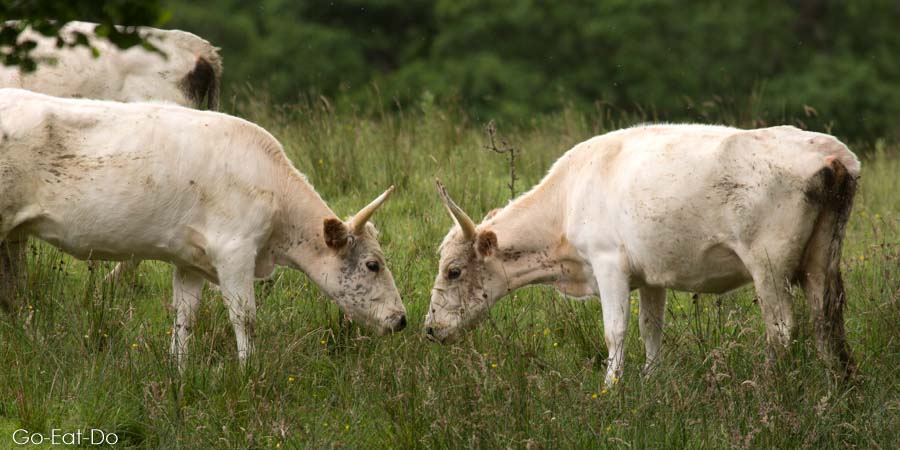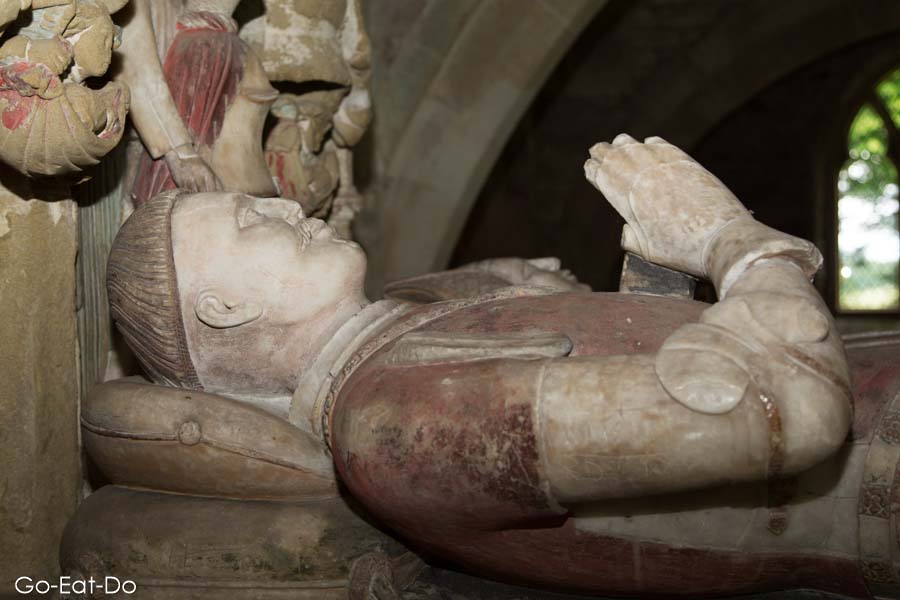Stuart Forster visits Northumberland in North East England to view the wild cattle of Chillingham.
Disclosure: Some of the links below are affiliate links, meaning, at no additional cost to you, I will earn a commission if you click through and make a purchase.
Would you have guessed that North East England is the location of the world’s only wild cattle herd? The Chillingham Castle website makes that claim. It also states that Chillingham’s wild cattle are rarer than mountain gorillas and giant pandas.

A day out in Northumberland
The white, hairy cattle are descendants of beasts that once roamed wild in the British Isles. They once crashed around in the forest that covered much of the British countryside long before humans started clearing swathes for agriculture and to build their settlements.
Just minutes after reading about Chillingham’s wild cattle online, I was sitting in the car and heading northwards. Intrigued, a spur-of-the-moment decision prompted a dash to catch a Sunday tour of Chillingham’s wild cattle enclosure.

Northumberland wildlife
Roe deer and red squirrels inhabit the Northumberland countryside around Chillingham. However, none of those creatures showed themselves as I hurried across the field between the estate’s top car park and the cattle enclosure.
In the nick of time, I tagged on to the group that had already purchased tickets to view the wild cattle of Chillingham. They had gathered by the hemmel, a stone barn where a collection of cattle bones and skulls were strewn on a wooden bench. A white hide was displayed above the bones.
An information board revealed that the first written record of the wild cattle dates to the 1640s. Yet it’s believed that the herd has existed in isolation for around eight centuries.
A note from December 1692 suggests the gene pool had shrunk to just 16 of the creatures. By 1799 that number had risen threefold. There are now over 100 wild cattle in Chillingham’s herd.
The notoriously harsh winter of 1947 came close to wiping out the wild cattle. Heavy snow drifts on the Cheviot Hills were a factor. Just five bulls and eight cows survived.

Chillingham’s wild cattle enclosure
Passing through the enclosure’s five bar gate I noticed a sign bearing the words ‘DANGER KEEP OUT’. Those ominous words of warning above a depiction of a horned creature leaning into a bleeding, grounded human.
Visitors are not permitted to enter unaccompanied by the warden.

As we walked into the enclosure one of the beasts let out a cry that sounded something between a roar of rage, a moo of deep pain and something that the Star Wars character Chewbacca might utter in the heat of battle.
Two of the males then proceeded to rut. First pushing against each other they then swung their horns at each other’s flanks. It looked far from good-natured play.
Meanwhile, a couple of adolescent creatures followed suit. They soon abandoned their clashing of heads to stand side by side grazing, reminiscent of a couple of teenage humans drinking together after going loggerheads over a girl.
Chillingham Cattle
We watched as four of the animals wandered through shoulder-high greenery to drink from the stream that flows through the estate.
Others scratched their backs against tree trunks in a field where nettles sprouted. Those creatures showed little interest in the head-to-head contests of strength taking place just paces away.
The wild cattle of Chillingham do, undoubtedly, behave in a markedly different manner to a domesticated herd.
Travelling to Chillingham to view the wild cattle herd was the basis of a rewarding day out in Northumberland.

Chillingham Castle
Chillingham Castle is said to be the most haunted fortress in England. The 13th-century stronghold is a 20-minute walk from the wild cattle park. Combined tickets for the cattle enclosure and castle are available.
The castle has a torture chamber where torture implements are displayed. An eclectic array of artefacts are on show in the medieval castle.
Visit the castle for an evening ghost tour. The tours provide insights into alleged hauntings by Lady Mary Berkeley, the Blue Boy and John Sage, a torturer. Ghost hunts are also held in the castle and its grounds.

Food and drink are served in the castle’s tearoom.
St Peter’s Church holds an impressive 15th-century tomb with stone effigies of Sir Ralph and Lady Grey. The place of worship is located between the wild cattle park and Chillingham Castle.
The historic building is the property of Sir Humphry Wakefield and Lady Wakefield.

Map of Chillingham Castle
The map below shows the location of Chillingham Castle in Northumberland:
Travel to Chillingham
Chillingham is in rural Northumberland, approximately 16 miles (26 kilometres) from the town of Alnwick. To get there from Alnwick, head north-west and follow the B6346 towards Chatton.
The nearest railway station to Chillingham Castle on the UK’s East Coast Main Line is Alnmouth. The rail journey from London to Alnmouth takes approximately four hours. The train journey from Edinburgh to Alnmouth takes a little over an hour.
Hotels in Northumberland
Search and book hotels in Northumberland via Booking.com:
Booking.com
Books about Chillingham and Northumberland
Planning a trip to Chillingham Castle and Northumberland? You can buy the following books via Amazon by clicking on the links or cover photos:
Chillingham Castle by Mark Fisher:





Further information
Tours of the wild cattle enclosure at Chillingham last approximately 45 minutes. See the Chillingham Wild Cattle website (NE66 5NA, tel. 01668 215250) for up-to-date information about tour times and prices.
See the Visit Northumberland website for ideas about things to see and do in England’s most northerly county. Visit England also has information about the county, and attractions elsewhere in the country.
Thanks for visiting Go Eat Do and reading this post about Chillingham wild cattle and visiting Chillingham Castle. Thinking of visiting Northumberland? Take a look at this post about places to visit in Northumberland.
Stuart Forster, the author of this post, is an award-winning travel writer from North East England. Stuart was named Travel Writer of the Decade at the 2020 Netherlands Press Awards for work about the Netherlands and Dutch culture.
If you enjoyed this post why not sign up for the free Go Eat Do newsletter? It’s a hassle-free way of getting links to posts on a monthly basis.
‘Like’ the Go Eat Do Facebook page to see more photos and content.
A version of this post was initially published on Go Eat Do on 12 August 2017.





Ferne Arfin
September 7, 2017 at 10:44Really fascinating. Who knew. Thanks for your spur of the moment inspiration to visit these amazing creatures.
Stuart Forster
September 7, 2017 at 18:42Thank you, Ferne. Watching them is fascinating. I recommend taking a decent camera in order to get good photos of the herd.
Cherie
September 11, 2017 at 22:06We didn’t have time to do the walk to the cattle after our visit to Chillingham Castle, although one of the fine beasts was awaiting at the driveway to the castle to greet us.
I did however experience the chills of Chillingham Castle.
Stuart Forster
September 12, 2017 at 08:04The implements in the torture chamber looked gruesome. The ghost walks sound fascinating.